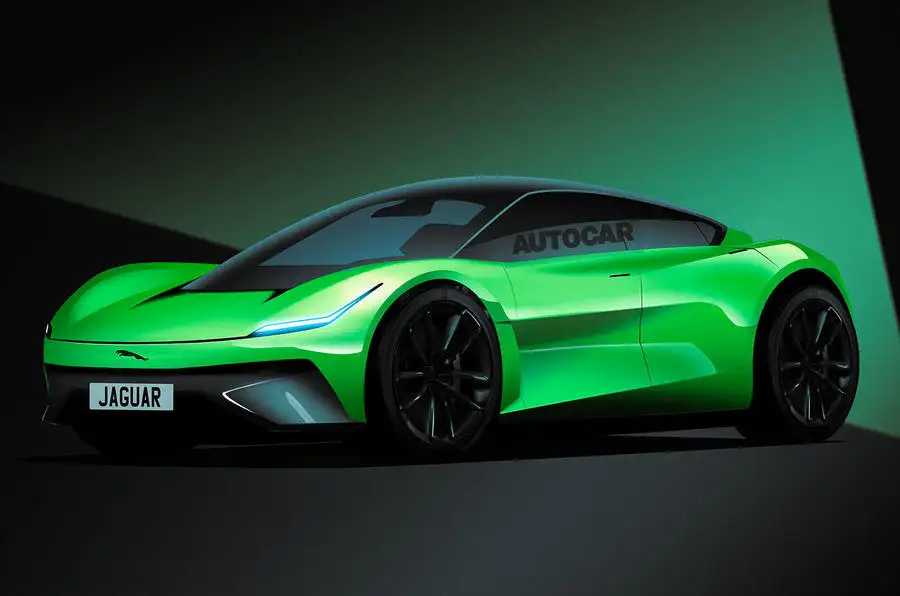Jaguar announces all-new JEA platform for its most powerful electric model that will be unveiled in 2024.
The first car in the reborn Jaguar line-up will be a four-door electric GT and the most powerful model in the brand’s history.
The new GT will be revealed in 2024 and on sale in 2025 as the first of three models in the new Jaguar family. Each will be built on an all-new bespoke EV architecture called Jaguar Electrified Architecture (JEA).
Confirmed today as part of an update to the Jaguar Land Rover (JLR) Reimagine strategy, the new Jaguar will have a range of up to 692km and a starting price in excess of £100,000 (AUD$185,000).
It is likely to have two motors for all-wheel drive and a power output in excess of 420kW. The target time for charging is 320km of range in 15 minutes.
Full details on JLR’s Reimagine update: Jaguar Land Rover will not build its own EV battery factory
Prototypes of the new GT will hit the road before the end of the year, ahead of its reveal in 2024. Virtual testing of the car is already almost complete ahead of this crucial next phase of its development, where the car will come to life for the first time, having been previewed officially for the first time today.
JLR’s chief creative officer Gerry McGovern said the styling of the GT and subsequent future Jaguars would be “the copy of nothing”, invoking the mantra and philosophy of Jaguar founder Sir William Lyons.
He said it was an “honour” to be asked to lead the rebirth of “a brand as loved and cherished” as Jaguar and vowed to return it to its past positioning as a ‘true British luxury brand”.
He referenced the E-Type and XJS as models that provided a blueprint – but not a retro copy – for how the reborn Jaguar would operate in creating shocking but beautiful designs and how the current Jaguar range was created under a different strategy that the brand would no longer be following.
He said: “The E-Type in its time looked like it had dropped from space. The XJS was equally compelling and a copy of nothing. It started again and didn’t copy the E-Type. The designs of current Jaguars aren’t bad. The strategy was more one of universal appeal and chasing more mainstream premium, which made the cars more normal. We want to go back [to the old philosophy]. It’s a complete reimagining.”
McGovern said the four pillars of future Jaguar design would be exuberance, fearlessness, uniqueness and progressiveness.
“Being exuberant is a real task, as there’s nothing else around like that,” he added. “Jaguars need to have a jaw-dropping moment, a sense of wow.”
The three new Jaguars are the result of an internal design competition that encompassed everyone in JLR’s creative team across all brands. The creative team was split into three teams as part of Project Renaissance, which McGovern believes will go down as a pivotal moment in Jaguar’s history, with each given the same brief to create a family of models for Jaguar’s future.
A total of 18 cars were created as full-sized models in just three months across the teams, but the winning team accounted for just three of them. McGovern said the verdict on choosing this team’s design was “unanimous”. “There was no debate. We said ‘that’s it.’
“We derived the design direction from there and evolved the designs from those three cars. The designs are at an advanced stage.”
We understand that while the first model will shock, the second and third models will reinforce that design and the models will clearly all be part of the same family.
The two cars to follow the GT, likely to be crossovers, will come at a rate of no more than one per year after the launch of the initial car.
Volumes will be around 50,000 cars per year for the range as a whole. The cars will all be built at a new dedicated area within JLR’s Solihull production facility.
Nick Collins, JLR’s vehicle programmes executive director, said the JEA too “was the copy of nothing” and no other EV architecture would “allow for such exuberant designs, proportions, refinement and performance”.
Lennard Hoornik, JLR’s chief commercial officer, said the investment in Jaguar stood at around £1 billion (AUD$1.85 billion). “We’re investing in Jaguar not just for its heritage but for its future.”
Around 100 suppliers have already committed to the new Jaguar project, which isn’t just about creating new cars but also changing every part of the brand and how customers interact with it.
“We’re creating an entirely new brand, new business models and new competencies, with every part of the client journey reimagined,” said Hoornik. “The way cars are bought [and] are serviced, this is all being done from the ground up, including online and offline journeys.”
This ground-up reinvention includes dealers and Hoornik said Jaguars “would not be available everywhere”, confirming reports that the firm is going to reduce the number of dealers selling its cars.
“But equally, there will be a range of three other brands [Range Rover, Discovery and Defender], all electric and with dedicated areas,” he added, a reference to the fact the Land Rover brand would be taking a back seat, with Range Rover, Discovery and Defender becoming model ranges in their own right alongside Jaguar in a four-strong line-up of JLR brands.
Commenting on the relaunch of Jaguar, new JLR CEO Adrian Mardell said: “Jaguar will not disappoint. It will begin to put right unfinished business.”
He said it wasn’t a “last chance” for the brand and that “this cat was going to purr”. “There are no such things,” he said on whether it was a last chance. “We create chances by what we deliver. I believe this brand will be here in 50 years.”
McGovern doesn’t believe the new brand positioning for Jaguar will alienate existing customers, although he admitted there will always be those resistant to change.
“Things have to move on, and we’re going to create such a compelling proposition that if there’s red blood in their body…” said McGovern on whether this new Jaguar would appeal to existing customers.
“EV is a propulsion method, as is ICE. EV can be as compelling as long as you have everything else with it. It’s like with watches: when a new one comes out, you still prefer the old one, but over time you see what it’s about and you change your mind.
“We respect existing customers, but we’re going after new ones as well, ones who think less about the vehicles and are more culturally driven, more artistic. When you go to something new, people look back – but that’s fine.”
McGovern showed a brief teaser image of the new Jaguar that gave little away, but he said that going electric “opened up more space inside” and allowed for the “exuberant proportions”.
Hoornik said the cars had “wowed” people in clinics and the firm had been “pleasantly surprised” as to how they had viewed the value proposition of the cars and the new brand.





